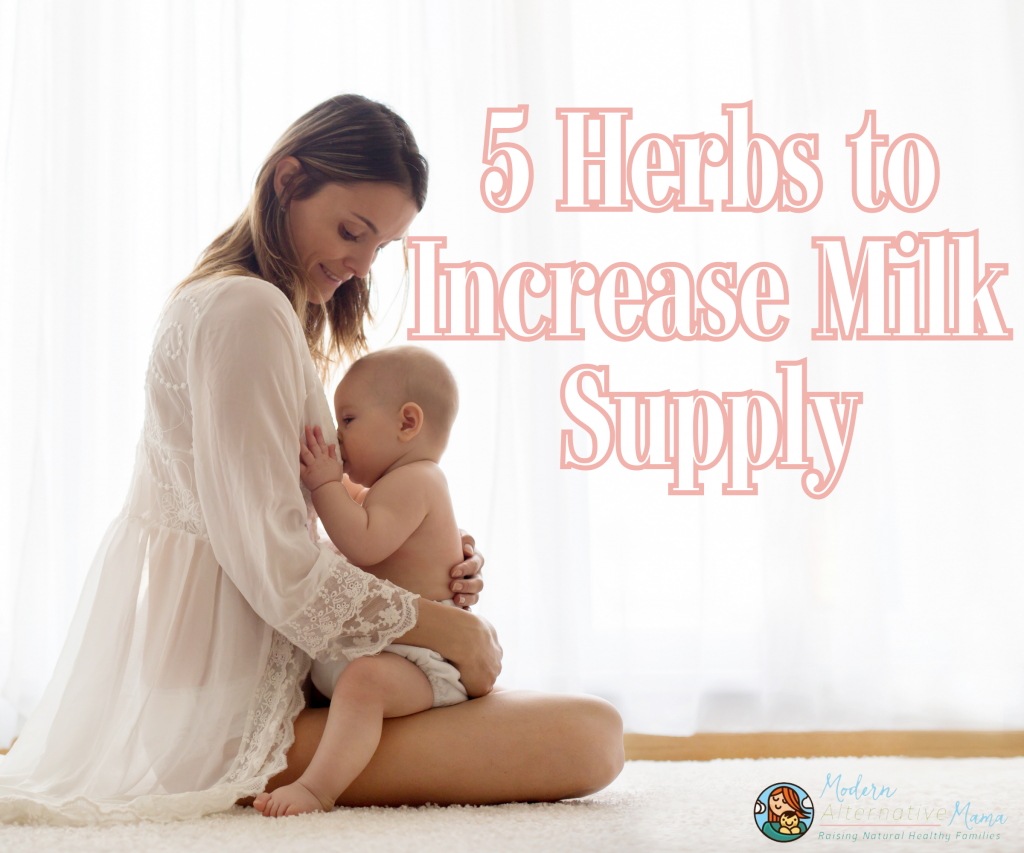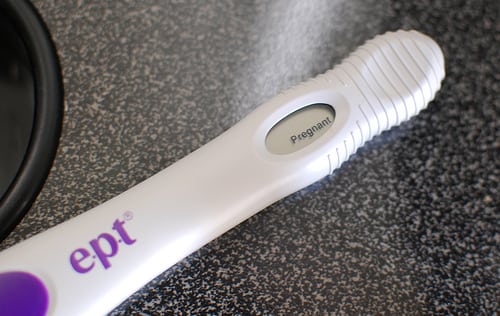Breastfeeding your precious baby is a huge step, and I’m sure you want to ensure your baby receives optimal nutrition. Breastfeeding requires patience, trial and error, and a support system. If you’re new to breastfeeding, I highly encourage you to check out Earthley’s downloadable guide, A Mother’s Guide to Breastfeeding Nutrition. This guide focuses on the importance of maternal nutrition, the truth about what diet does (and doesn’t) impact, herbal supplements, and breastfeeding support. You can do this, mama!
Of course, you’re here to learn how to increase your milk supply. First, let’s discuss lactation basics. Then we can learn about five herbs that increase milk supply (and how).
Lactation occurs when hormonal changes signal the mammary glands to make milk in preparation for a baby (1). Although breastmilk is the best source of nutrition for babies (2), some mothers struggle to produce a sufficient supply; that’s where galactagogue herbs come in. If you read our blog, Do Galactagogues Really Work?, you know “galacto” comes from the Greek word for milk. Galactagogues are the foods and herbs said to help boost milk supply (3). Many of these milk-boosting foods and herbs also give your body key nutrients. They are a win-win for both mom and baby.
5 Herbs to Increase Milk Supply
There aren’t many genuinely unsafe herbs while breastfeeding. The most commonly concerning herbs for breastfeeding stages are peppermint and spearmint. These are not unsafe, but caution is recommended as some people are sensitive to mint and may notice a decrease in milk supply. If you have a known sensitivity to mint or notice a change in your milk supply, discontinuation is recommended. Now, let’s discuss the herbs that increase milk supply.
Alfalfa
Alfla is most commonly known for its benefits against menopausal symptoms. The plant compound phytoestrogens in alfalfa aids in menopausal symptoms and may boost breast milk production. Phytoestrogens mimic the effects of estrogen or oestrogen in the body, one of the most critical indirect hormones for breast milk production and supply (4). An animal study found that increased alfalfa hay consumption in cattle increased milk supply and decreased body weight (5).
Additionally, alfalfa seeds and leaves are typically used in herbal supplements or consumed alone as alfalfa sprouts. Alfalfa contains vital nutrients, including vitamins K and C, folate, thiamine, riboflavin, magnesium, iron, and copper (6). Nutrients are so important while breastfeeding for both mom and her nursling.
Blessed Thistle
Blessed thistle (not to be confused with milk thistle) is also a popularly recommended herbal galactagogue (7). Although many mainstream sources claim no evidence to prove this (8), tradition says something different. Even mainstream sources acknowledge the use of blessed thistle in folk medicine, which is traditionally passed down knowledge (9).
Unfortunately, researchers haven’t studied this herb much, so these claims can’t be proven. The only study I could find was very limited. It included three breastfeeding mothers who used a combination of fenugreek and blessed thistle. Two of the three women found the combination successful, and one was unsure (10). Since an herbal combination was used, we cannot isolate which herbs were successful, especially when fenugreek is known to increase milk supply.
Nonetheless, the blessed thistle’s remarkably safe nature wouldn’t harm mom or baby if used, especially considering its many other health benefits. With that said, I sure hope they further analyze the lactation benefits of blessed thistle as science continues to advance.
Fennel
Fennel, like alfalfa, is commonly known for its menopausal support but may also boost breastmilk production. Research has found that the plant compound anethole has dianethole and photoanethole, which are responsible for the galactogenic effects (11). Additionally, fennel may increase milk secretion and blood levels of prolactin, the hormone that signals the body to produce breast milk (12).
Additionally, fennel seeds, the most widely used part of the plant, are highly nutritious. Fennel seeds are known for their omega-6 fatty acids, potassium, calcium, phosphorus, magnesium, vitamins A and C, and more (13). Although fennel has some protein, it is not a high-protein food and only consists of approximately 1 gram of protein per cup of fennel seeds.
Fenugreek
Fenugreek is well known for its milk-producing benefits, and science backs this. One study split 66 mothers into three groups (group one received fenugreek tea, group two a placebo, and group three, nothing). During the study, the volume of pumped breastmilk increased from around 1.15 ounces (34 mL) in the control and placebo groups to 2.47 ounces (73 mL) in the fenugreek group (14). Additionally, a study review indicated fenugreek consumption significantly increased breast milk production (15).
I keep discussing the importance of nutrition, and as much as your diet is vital to your health, so is being able to digest it properly. Thankfully research indicates fenugreek reduced heartburn symptoms in people with frequent heartburn during a 2-week pilot study and antacid medications (16). Another study found that fenugreek reduces ventilated patients’ gastrointestinal side effects (17). This benefit can be passed through the breastmilk to the nursling.
Milk Thistle
Milk thistle has been used for thousands of years for various health benefits but is most recognized for its milk production properties. Silymarin is an extract of milk thistle containing various flavonolignans responsible for its health benefits (18). In animal studies, silymarin positively impacted feed and growth outcomes for some laboratory animals (19). In human studies, mothers who took 420 mg of silymarin for 63 days produced 64% more milk than those who didn’t (20).
Additionally, milk thistle is brimming with amazing benefits you can pass on to your nursling. Milk thistle has robust antioxidant, antiviral, and anti-inflammatory properties (21,22,23). It can also support both mom and baby’s immune systems while supporting the baby’s bone mineralization (24,25).
As an honorable mention, I would like to discuss marshmallow root. Marshmallow root is mostly known for its respiratory-supporting properties, but is sometimes used as a galactagogue. The thing with marshmallow root is it doesn’t work alone. Instead, marshmallow root is often used with other galactagogue herbs like fenugreek, alfalfa, or blessed thistle to encourage milk production (26). Although marshmallow root is included in some proprietary mixtures promoted to increase milk supply, some sources claim there is no evidence it works (27). Even if it doesn’t work, one great thing about adding marshmallow root to milk production products is its ability to soothe the digestive tract, which can be passed on to the baby through breast milk (28).
Additional Breastfeeding Resources
If you’re looking for a way to increase your milk supply, consider a pre-made herbal tincture. Mama’s Magic Milk Boost was created to increase milk supply with all-natural ingredients. This product is high in vitamins and minerals to nourish the body but also contains herbs to soothe the baby’s tummy. This tincture pairs amazingly with Milk Flowin’ Salve, created to help relieve clogged milk ducts.
Some additional breastfeeding resources include:
- Breastfeeding Support Blog
- The Emotional Side of Breastfeeding
- Practicing Essential Oil Safety While Breastfeeding
- Recipe Collection: Milk Boosting Smoothie
- DIY: Homemade Breast Pads for Nursing







